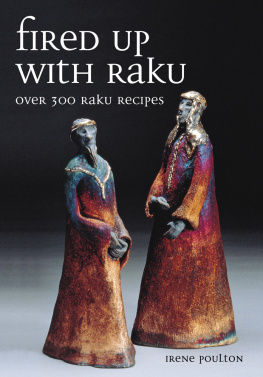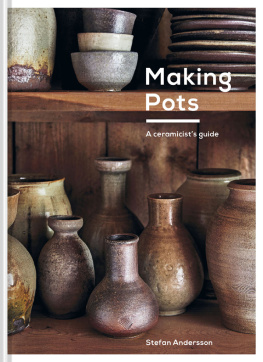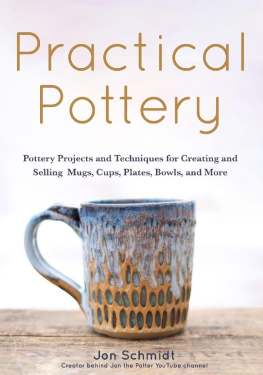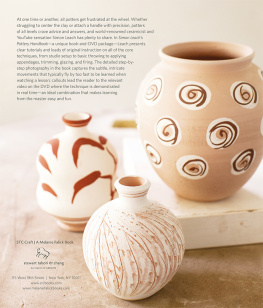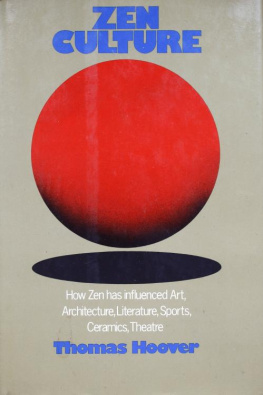B ibliography
The following sources, some of the wide range of available materials, are the ones I found to be the most helpful in writing this book.
B ooks
Andrews, Tim, A Review of Contemporary Raku (A. & C. Black, London, 1997)
Birks, Tony, The Complete Potters Companion (Conran Octopus, London, 1997)
Branfman, Steven, Raku: A Practical Approach (A. & C. Black, London, 1991)
Branfman, Steven, The Potters Professional Handbook (American Ceramic Society, 1996)
Byers, Ian, Raku: The Complete Potter (Kangaroo Press, Kenthurst, Australia, 1990)
Connell, Jo, The Potters Guide to Ceramic Surfaces (New Burlington Books, London, 2002)
Ferguson, Gary, Raku Glazes: The Ultimate Collection; Over 360 Recipes and More (self-published, 2003)
Ferguson, Gary, Raku Secrets: The Complete Guide of Amazing Raku Results (self-published, 2004)
Jones, David, Raku: Investigations into Fire (The Crowood Press, Ramsbury, 1999)
Nigrosh, Leon, Clayworks: Form and Idea in Ceramic Design (Davis Publishers, Worcester, MA, 1995)
Peterson, Susan, The Craft and Art of Clay (Laurance King Publishers, London, 1992)
Sentence, Bryan, Ceramics: A World Guide to Traditional Techniques (Thames & Hudson, London, 2004)
Watkins, James C. & Paul A. Wandless, Alternative Kilns and Firing techniques (Lark Books, New York, 2004)
P eriodical L iterature
Ceramic Art & Perception (Sydney, Australia)
Ceramic Technical (Sydney, Australia)
Craft Arts International (Sydney, Australia)
Pottery in Australia (The Potters Society, Crows Nest, Australia)
1 W hat I s R aku ?
O rigins
The origin of raku can be traced back to sixteenth-century Japan and the tea ceremony. The name rakuyaki or raku denotes a type of Japanese pottery which involves low firing temperatures and the removal of pieces from the kiln while still glowing hot. In the traditional Japanese firing process, the pot or bowl is removed from the hot kiln and put direct into water or allowed to cool in the open air. Raku is recognized as the traditional method for creating clay bowls for the tea ceremony. These raku bowls are hand-made from earthenware and, due to the low firing temperature, have a porous body and were usually decorated by using a lead-based glaze. Some of these tea bowls are highly prized, each having a distinct form and individual style.
It was during the late sixteenth century that these raku artist potters were able to rise above the general craft potter of Japan with the formal recognition of their skills. The name raku is derived from the kanji character which means enjoyment or ease. It was during this century that Chojir, first of a long line of raku potters, came under the patronage of the tea master Sen-No-Rikyu. In 1598 the ruler Hideyoshi bestowed the name Raku on Chojir after he began making tea bowls to the great tea masters specifications. Upon the death of Chojir in 1592, his son Jokei continued the raku tradition. Both the name and the ceramic style have been passed down by the Raku family and continue to the present.
Raku as it is practised today in the West bears only a little resemblance to the original method used for tea ceremony bowls. Paul Soldner, the American potter, is credited with westernizing this traditional practice sometime in the middle of the last century. The use of a reduction chamber at the end of the raku firing was introduced by him to compensate for the difference in atmosphere between the original, wood-fired, Japanese raku kilns and the more up-to-date gas-fired American kilns. Typically, pieces removed from the hot kiln are placed in chambers full of a combustible material, such as straw, sawdust or newspaper, which then provides a reducing atmosphere for the glaze, and to expose the unglazed clay surface to the black carbon. The use of lead in a glaze is now discouraged since it is toxic, but almost any low-fired glaze can be used.
C ontemporary M ethods
But the methods used in raku today are still similar, in that the piece is first bisque-fired and then glazed and placed in a raku kiln and fired to approximately 1000C, at which time the piece is taken from the kiln, while still glowing red, and placed in an airtight container. Sawdust, leaves or shredded paper and various other inflammable materials may be used to cover the piece after which a lid is placed over the top of the container, which is then left, depending on the size of the work, for anything from 10min to an hour to cool. This process is not without risk to the piece, the thermal shock of such a rapid transition from 1000C can and often does shatter the piece.
The effects on the glaze are unpredictable, and although one can say with confidence that the effects will lay within certain limits, it is impossible to anticipate precisely what the surface quality will be. This freedom in allowing things to happen is so seductive for the maker and the collector; serendipity, or a happy accident? The unique appeal the raku experience has, in my experience, centres around the particular moment when we open the reduction bin and expose the finished article. But before this opening we hover over the kiln and with anticipation approach the reduction containers. How has the piece reacted to the kiln and reduction, has the glaze worked? These and more questions are asked and finally answered, at the great unveiling.
However, it is also my habit to refire until I am satisfied with the results, a practice that can and often does lead to the complete destruction of the piece. By its very nature, raku leaves an indelible imprint on any work. This can be small crackles in the glaze or glaze that runs; this is not a fault, but as Japanese tradition states, The history of the fire. Moreover, according to Japanese lore, a raku piece that has been given as a gift is very lucky for the owner and should never be given away.
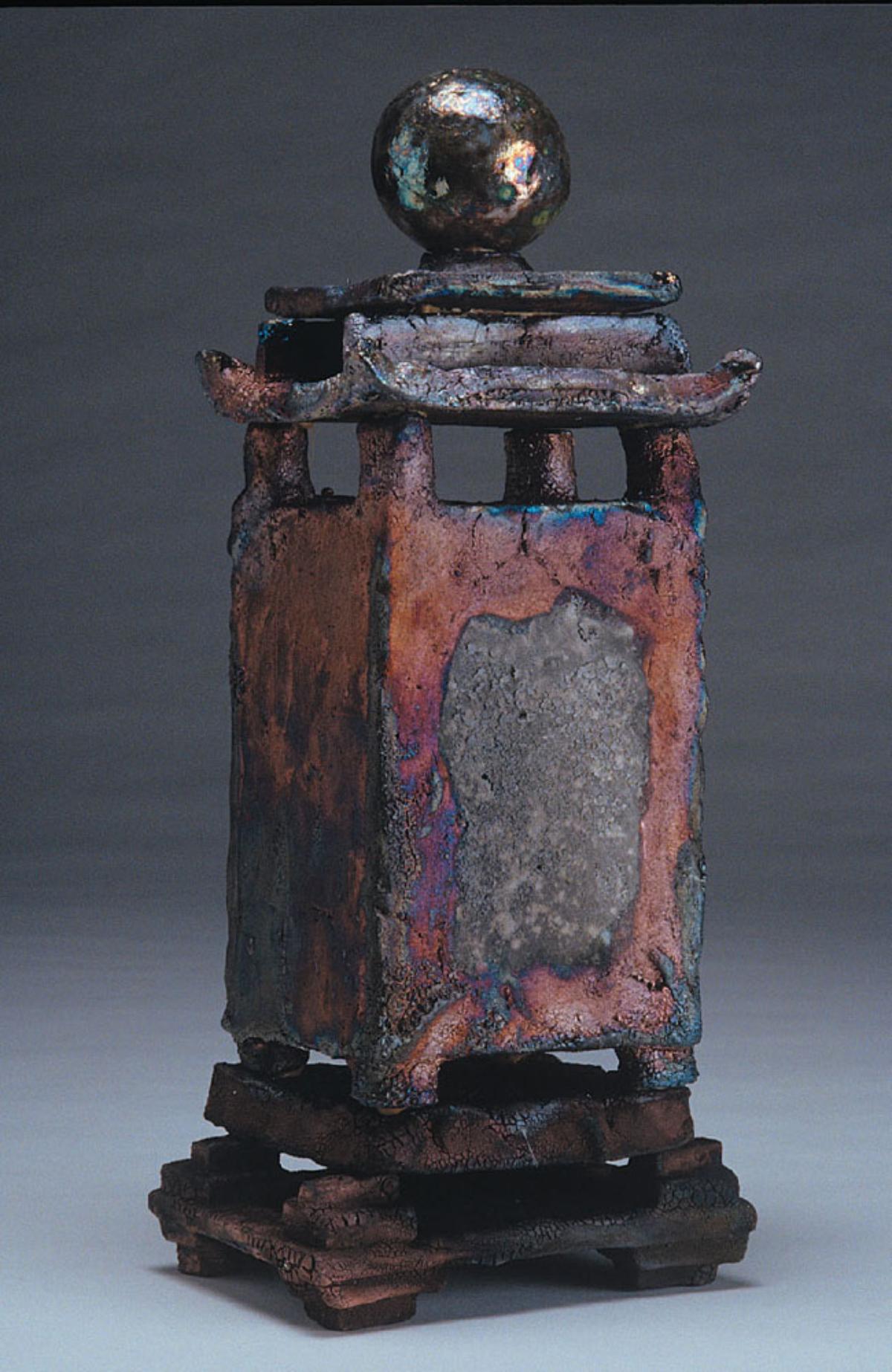
Shrine.
PHOTO: VICTOR FRANCE
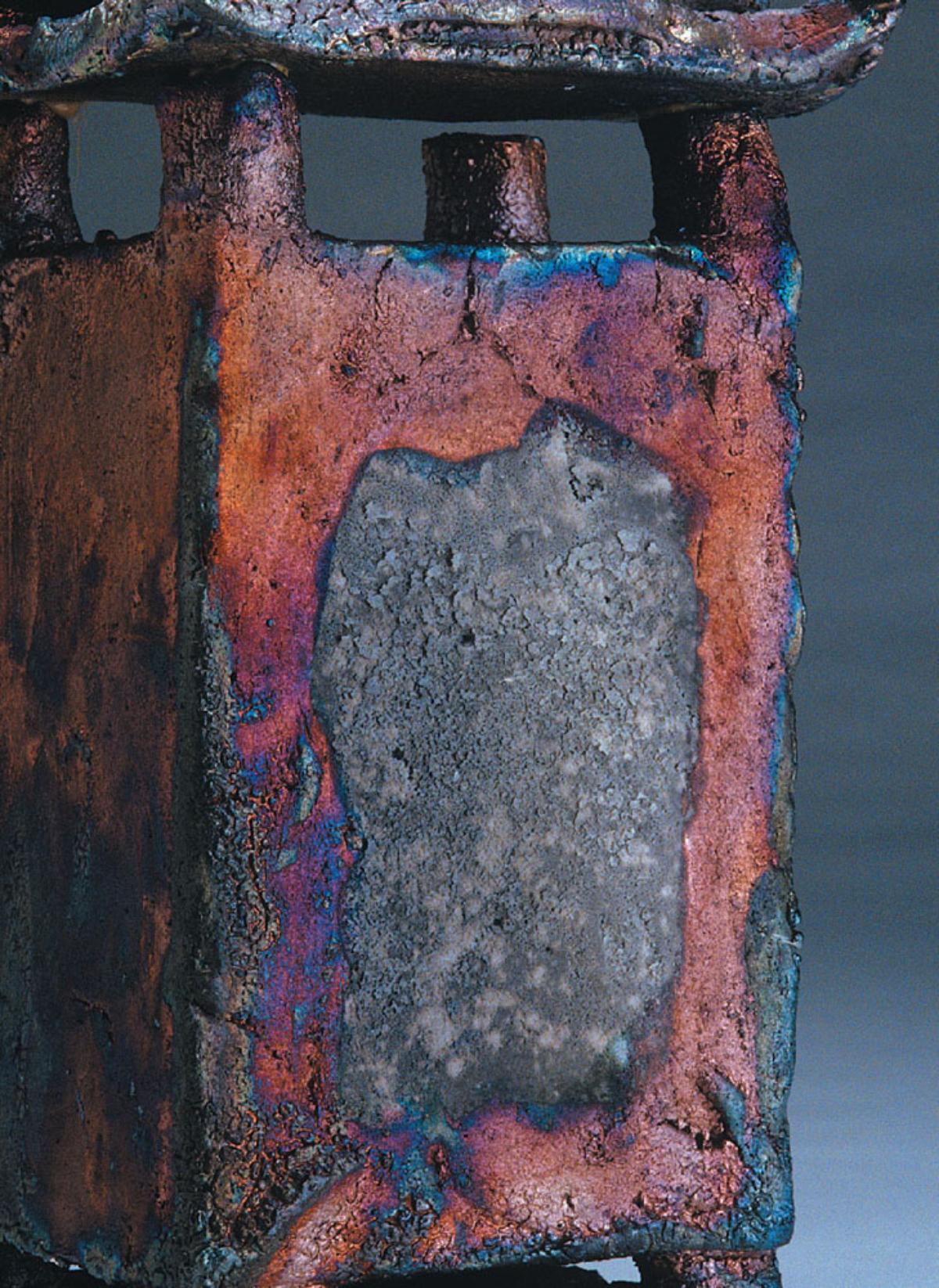
Shrine (detail).
PHOTO: VICTOR FRANCE
T his B ook
Having specialized in raku firing for over twenty years and since having my own web site, I have been inundated with requests for glaze recipes and tips on how to achieve certain types of result. I therefore decided to gather all this information together in one handbook. The glazes I have collected over these years have come from a number of sources, such as books, journals and the Internet, and, of course, other raku artists, plus some of my own efforts. Several of the glazes I have altered to suit my own style of firing and so they may differ slightly from the original. Where possible I have acknowledged the authors of the glazes, and to the ones I have omitted or have not known I apologize now. Several glazes have been passed around from person to person and the original creator may be forgotten, and in addition the glazes may become changed subtly over time. I hope readers enjoy trying out these recipes and I do stress that everyone should test first before trying out a new glaze on a precious new form or pot. You have to also take into consideration that many ingredients change subtly over time.

Shrine No.2. PHOTO: VICTOR FRANCE

